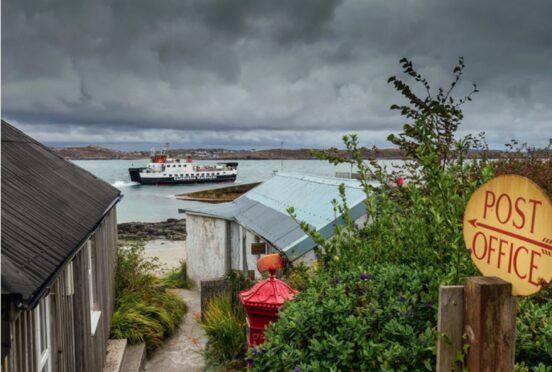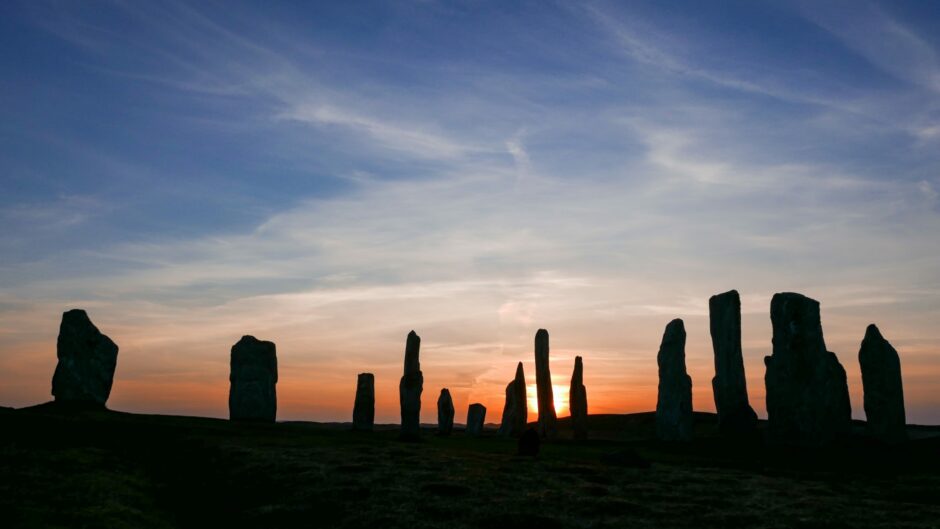
For 14 best-selling editions, travel writer Peter Irvine has been steering grateful tourists and travellers to Scotland the Best.
His guides listing the country’s finest attractions, from glens to cafes, covered every corner but his latest book takes a detailed dive into Scotland’s islands and, for Irvine, nothing could give him more pleasure. “I love islands, I have a particular thing about them,” he said.
According to Irvine, the islands have an almost mystical quality that can calm the mind, getting to work on the traveller’s soul even before they step foot off the ferry.
He said: “Stepping on to the boat to get over to an island is part of the experience. You stand on the deck and you watch the porpoises swim alongside you and the birds in the sky, and you leave the city and your worries behind you. You disembark in another place, and it’s like being in another country, or another world. It’s small, and you can get around it in a day. That’s why I love them.”
The slower pace of life – things do not move as quickly as they do on the mainland – is part of the charm for visitors who, says Irvine, can expect rewards untold if they adapt. He added: “On an island, things take time. There is no roar of traffic, and the loudest noises are the sea and the cliffs on a stormy day.
“My thing about islands is that they are real. They are full or real people, there are real things going on. Yes, there is difficulties with the ferries sometimes, and the weather can be inclement, and all the rest, but it is part of the experience. Everything about travelling through the islands is shockingly rural.
“The light can be amazing, it can be celestial, and the sea and the horizon can be dramatic. It’s like a reality show in the best possible sense. I always feel comfortable and included on an island.
“I brought my teenagers from London to some of the islands with me. They felt comfortable and safe, and no one was hassling them. You know you are somewhere on an island.
“When you’re in the middle of Birmingham, you might as well be in the middle of Dusseldorf. But Scottish islands are singular, all of them are different – even the ones that are close to one another.”
When researching past editions of Scotland The Best, Irvine usually had to hit the road on his own. He had too much to see and do and it would not be fair on a companion to take them on a tour of Scotland so rapid it would give them whiplash.
While exploring the quieter islands, however, it was the perfect time to finally take along some company. Irvine said: “Usually I’m going to about 50 places a day, and the car is my office. While travelling through the islands, the pace was much slower. I had never been to the isle of Coll before, and I brought along my friend with me. We had a great time exploring the island.”
After a tough two years of lockdown and restrictions, people are finally venturing outside their neighbourhoods and into the wider world. But when it comes to choosing where to go, the last thing you want to do is pick a dud of a holiday destination. That is exactly what Irvine wanted to help people avoid when writing his definitive guide to Scotland’s islands.
He said: “I’m the type of guy who thinks life is too short for the things that aren’t very good. I wanted to write a book that told people where the really good beaches were, where was the best place to get fish and chips, where had the best fine dining experiences. I wanted to help people save time and only go to the really good places.”
Island, the best
Peter Irvine refuses to be pulled into choosing just one island above all, but does did admit to harbouring a soft spot for the Isle of Raasay, which lies between Skye and the Scottish mainland.
Irvine said: “Raasay is one of my ideal places to go. I have made the journey there many times because, to me, Raasay is the perfect island. There’s a great landmark hill, Dùn Caan, in the middle, woodlands and moorlands, a loch to swim in, a village, Inverarish, with rows of couthie cottages, a community shop and a new, quite flash distillery.
“The view from the hill above Raasay House at the bottom of this small, long island is one of the great outlooks of Skye. It is as if Raasay pays homage but keeps its distance.
“Raasay’s story is Scotland’s history in microcosm. Some of that relates to the Big House, to the Clearances, to the now-famous Calum’s Road and the iron mine, and to the huge range of outdoor activities that people now come here to engage in and to learn.”
Travel writer Peter Irvine worked with some of Scotland’s leading travel photographers to capture the spirit of each island in just one frame.
Among the most breathtaking examples from the book is a glorious shot of Callanish Stones at sunset, by Richard Cross.
Irvine explained how the photo came about: “He was on a bike trip on Lewis and reached the Callanish Stones. He could tell it was going to be a good sunset, so he camped there and waited for everyone else to go home.
“He didn’t want to intrude on other tourists’ experiences, so he waited until it was quiet and took the shot. It’s stunning.”
Irvine added: “When it came to choosing photography for the book, I started with the premise that I wanted to convey the atmosphere and essence of islands in various weathers. I wanted to convey the mood, atmosphere and history of the islands, and to convey the humanity at the heart of island life.”
Scotland The Best: The Islands, published by Collins, is out now

Enjoy the convenience of having The Sunday Post delivered as a digital ePaper straight to your smartphone, tablet or computer.
Subscribe for only £5.49 a month and enjoy all the benefits of the printed paper as a digital replica.
Subscribe